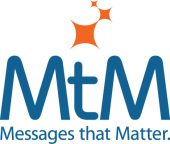A good positioning statement needs to be important, believable and unique or your target audience will ignore your marketing efforts. You can sum it up in two words: “So what?!” If the question pushes you to answer with a more compelling benefit, your first positioning statement did not make the cut.
Have you ever been in one of those corporate restrooms where there’s a full-length mirror near the exit? That’s for you to do a reality check before you go bounding out into public view. Believe me, a reality check is worth the extra bit of time it takes when you are doing positioning.
But B2B software and technology companies in a hurry to launch their new marketing campaigns sometimes forget to ask that simple, two-word test: “So what.” Instead, market conditions lure even the most level-headed companies into a chest beating “we’re the greatest” contest that can blow up in their face. Even if the results aren’t disastrous, it’s at best a lost opportunity to communicate what’s really important to the target market and to gain credibility.
Stick to benefits that solve real problems
The best way to introduce new products, and effectively market existing ones is to focus like a laser beam on the key customer problem. Develop a benefit-oriented positioning statement that addresses this key problem, and then test it by asking “so what?”
If your answer articulates a more distilled benefit statement, continue this line of questioning. Eventually, you will arrive at one important, believable and unique benefit. It will almost always be in one these three categories:
- Volume – helps you sell more, do more business.
- Market share – grab a longer share of your market.
- Profit – make more money.
Because these stripped-to-the-bone benefits might not pass the believability test, you may need to go back to the previous level (the last answer to “so what”) and use that statement.
Most claims that don’t pass the “so what” test may have their place in the story you tell about your product, but only if they support a much more important and unique benefit claim. Some benefits are so commonly used that it makes no sense to use them as the driving force behind your positioning strategy unless you happen to be a dominant player in your market, have been using the claim for years, and you are willing to stick with it. Just keep an eye open for competitors who may outflank you with a more direct, compelling benefit that wins the next heat in the “so what” sweepstakes.
Summary
A positioning statement must respond to a prospect’s primary problem. When it does, your positioning statement creates confidence in your ability to offer a desirable solution, one that creates a sense of urgency in your prospect’s mind. Take the time to ask “so what?” When you can answer with a benefit claim that is important to your buyers, believable and uniquely yours, you can be confident you’ve found the right message for the market, and the market will reward you.
